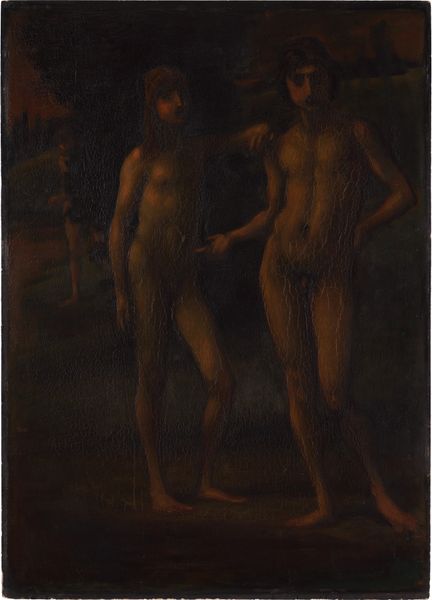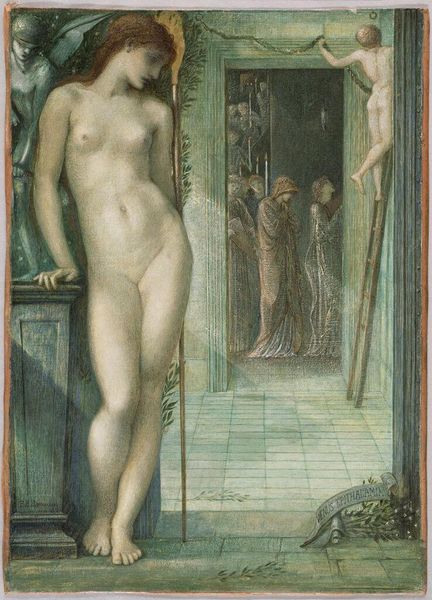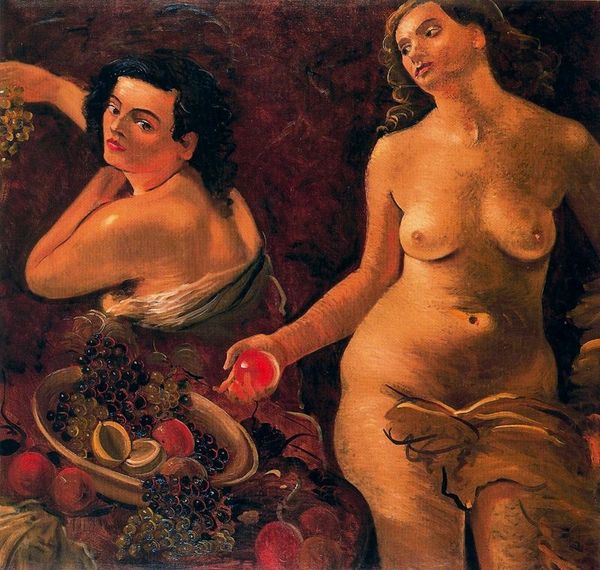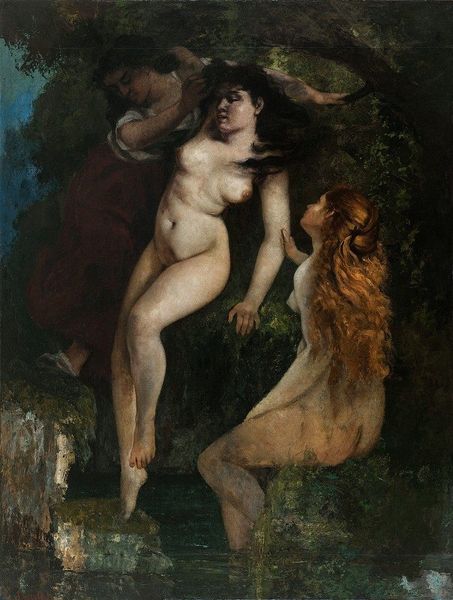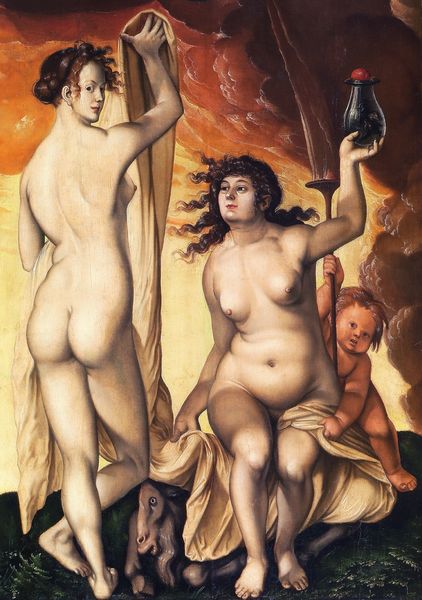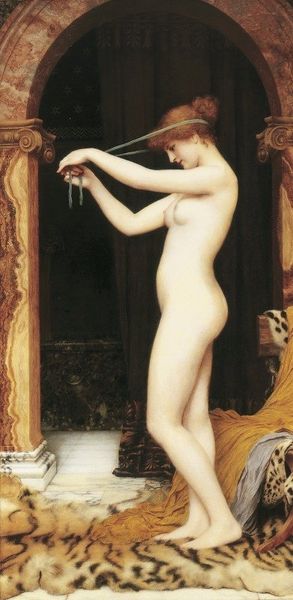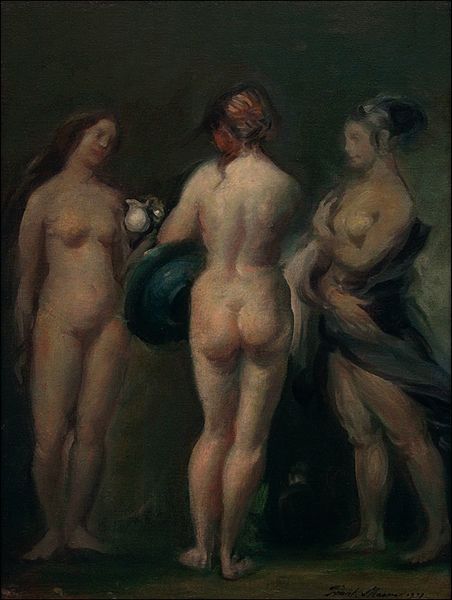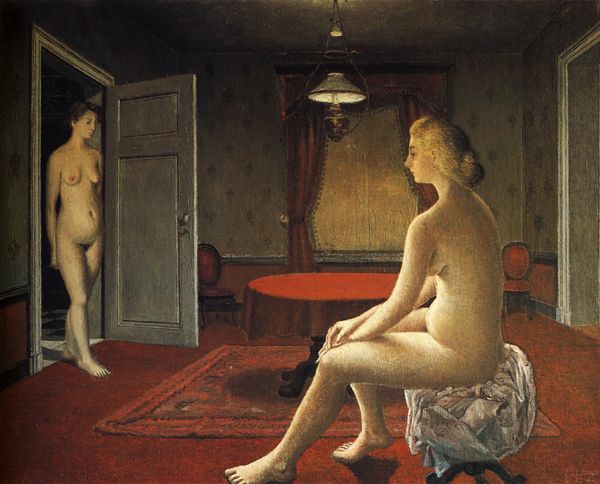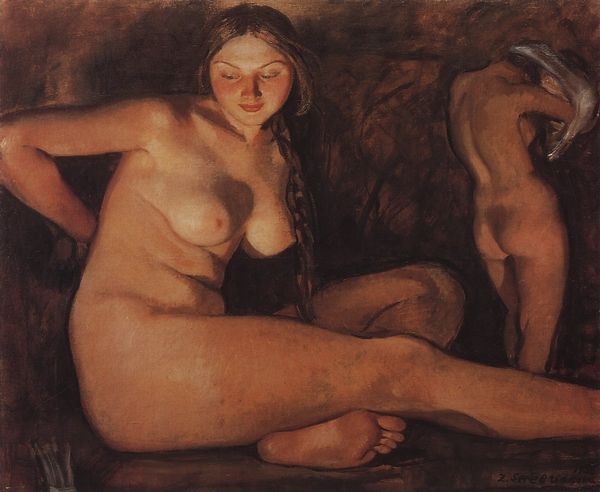
Copyright: Public domain
Editor: Here we have Julio Romero de Torres' painting, Rivalidad, created in 1926 using oil paints. The dark background, contrasting with the figures in the foreground, gives the work a rather melancholic tone. The positioning of the women, especially their hand gestures, seem deliberately posed. How do you interpret this work? Curator: Note the deliberate construction of pictorial space. The curtain frames the figures, pushing them forward while simultaneously creating depth with the landscape. The figures themselves are studies in contrasting forms. Notice how the artist employed classical realism techniques for rendering figures with an almost photographic precision. Consider also the function of color—the deep greens and browns set off by the oranges, a masterful application of complementary contrast. Does this suggest anything about its symbolic structure? Editor: It appears highly constructed. Is it the artist's use of chiaroscuro that elevates the visual drama, or is it the symbolism that intensifies the narrative and atmosphere? Curator: It’s both. Light isn't merely illuminating; it models the figures and casts dramatic shadows that create a tense atmosphere. In terms of structure, the hat placed in the lower centre cuts the plane with perfect tension. As you observe, the entire painting has been meticulously planned out. How does this attention to detail influence your perception of its intent? Editor: It definitely gives the impression that every element contributes to a deeper story or feeling, maybe of the struggle or competition hinted at in the title? The tension of a 'rivalry' maybe conveyed in the sharp contrast, for example. Curator: Precisely. Romero de Torres employs a rich semiotic language—each visual component works in concert, suggesting both a personal narrative and something larger. In essence, what matters is not solely what is depicted but how the pictorial elements combine to create layers of meaning. Editor: I see. Focusing on how the painting is put together really opens up new ways to understand its meaning, moving beyond just what's shown.
Comments
No comments
Be the first to comment and join the conversation on the ultimate creative platform.

